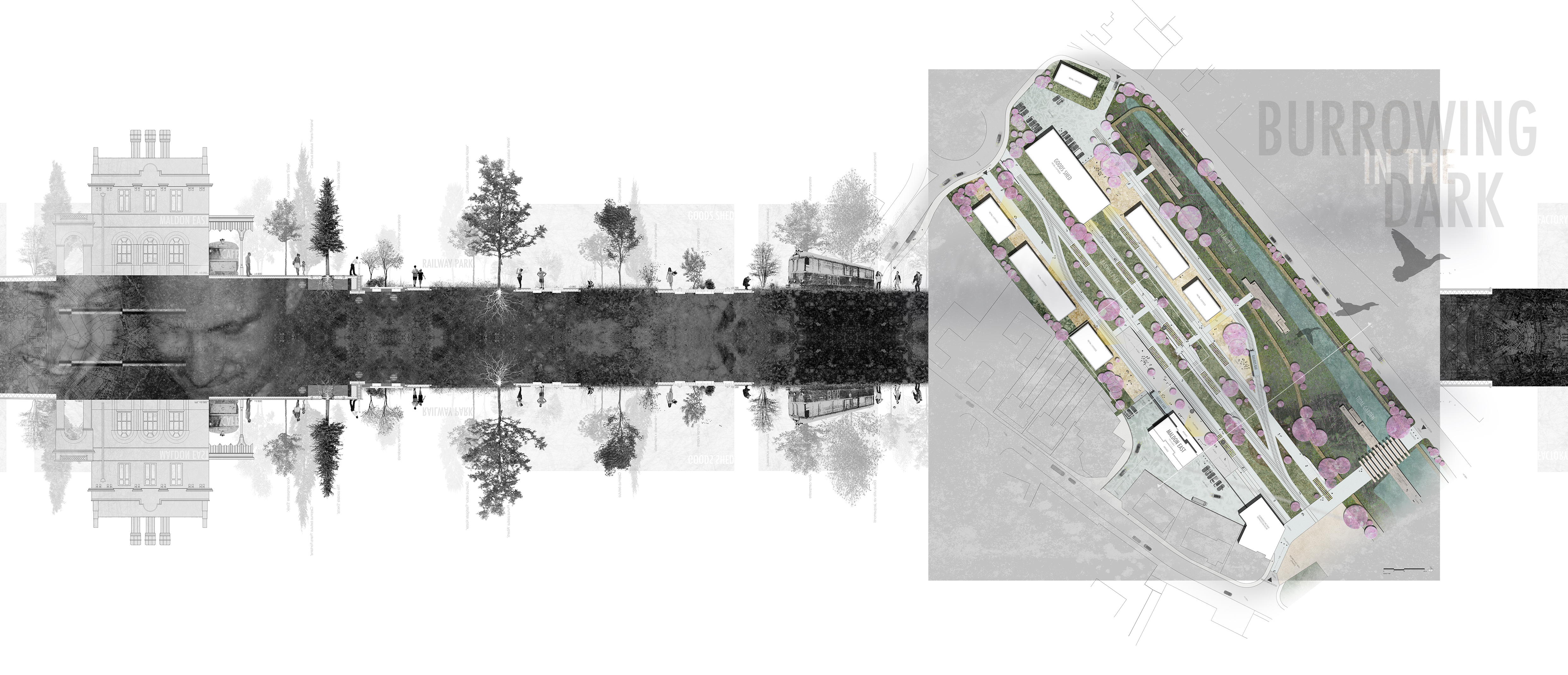
Burrowing in the Dark: Aleatory Systems as Design Catalyst in Post-Industrial Maldon
Landscape Architecture
Writtle University College
Bounded on two sides by water, Sadd’s Wharf is placed in a dynamic physical context. The shift from urban to natural is apparent, as channelised river and rigid, architectonic forms of the post-industrial landscape give way to sinuous, flowing lines and expansive mudflats, water, and sky. This experientially fertile environment presents exciting opportunities for design intervention informed by both conventional site analysis and the liberating potential of aleatory systems.
Susan Herrington (2017:242) defines aleatory systems as the ‘systematic integration of spontaneity, chance, and randomness into the design process. Aleatory systems are evident in the methodology of Surrealists who used mediums such as collage, frottage, and grattage to liberate the creative mind from repressive, aesthetic and moral preoccupations. Aleatory systems are a legitimate part of design development, as a means of catalysing the creative process, drawing-out ideas, and tapping unseen potential in site and designer. They are also capable of conveying design intent, by hinting at non-tangible elements – the experience of landscape.
Drawing on Surrealist methodology, instinctive responses to site including ‘emotional topography’, ‘points of intensity’ and the dérive, were used to inform an overarching design strategy, notably to reintegrate Sadd’s Wharf with historic Maldon to the south, improve walkability, and promote active engagement with the water’s edge. Techniques such as collage and photo-montage, meanwhile, were a means of distilling the plethora of visual information. Through this, the subconscious was allowed to speak to new combinations and permutations.
